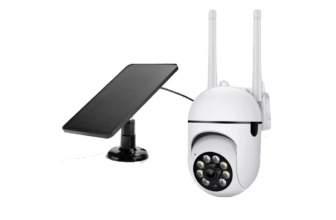How to Install Smart Locks
When it comes to smart home technology, smart locks are among the most valuable devices due to their advanced features that offer convenience, security, and reliability. These locks enable homeowners to manage access to their properties through a mobile app on their smart devices. If you’re interested in learning how to install smart locks on your door, this guide will walk you through the process step by step, covering the essential considerations you need to keep in mind:
Let’s begin by understanding the different types of smart locks available today, such as deadbolt smart locks, lever smart locks, and conversion kits for existing locks.
Step-by-step guide on how to install smart locks
The rising demand for home automation and security has made smart locks a popular choice for homeowners. They offer convenience and enhanced security and can be easily integrated into existing home automation systems. In this blog post, we will provide a step-by-step guide on how to install smart locks in your home.
1. Choose the Right Smart Lock
Before installation, it’s crucial to select the appropriate smart lock that aligns with your specific needs. Factors to consider include compatibility with your current door setup, integration with smart home systems like Amazon Alexa, Google Assistant, or Apple HomeKit, voice control capabilities, auto-locking features, remote access, and more.
2. Gather the Necessary Tools
Typically, you’ll need basic tools like screwdrivers, drills (if new holes are required), a level, and a pencil for marking. Refer to the instruction manual for a comprehensive list of tools needed.
3. Remove the Existing Lock
Begin by uninstalling the old lock properly, ensuring you follow the manufacturer’s guidelines to avoid damaging the door or lock. This process involves removing both the exterior and interior screws of the existing lock.
4. Prepare the Door for Installation
After removing the old lock, you may need to make adjustments to the door or frame to accommodate the new smart lock. This could involve drilling new holes, creating space for the bolt body, or repositioning the strike plate on the door frame.
5. Install the Smart Lock
Follow the manufacturer’s instructions to install the smart lock components, including the outer and inner parts, connecting cables or batteries, and verifying the lock’s functionality.
6. Set Up the Smart Lock
Once physically installed, proceed with setting up the smart lock’s firmware and integrating it with your smart home system if applicable. This may involve downloading an app, creating an account, and following the provided instructions.
7. Test and Adjust
After installation, test the smart lock to ensure everything is working correctly. You may need to make adjustments to the lock’s position or settings for optimal performance.
Pros and Cons of Smart Locks
Pros:
- Keyless entry and remote access capabilities
- Ability to grant limited access to others
- Enhanced security features like access logs and entry notifications
- Integration with smart voice assistants for added convenience
- Eliminates the need for physical keys
Cons:
- Higher initial cost compared to traditional locks
- Potential security vulnerabilities if not properly secured
- Reliance on battery life and connectivity
- Some models may require professional installation
- Compatibility issues with certain door hardware and smart devices
By weighing these factors and understanding the installation process and benefits of smart locks, you can make an informed decision on whether they are the right choice for your home. The added convenience and security they offer make smart locks a valuable addition to modern homes.
Conclusion
Installing a smart lock may seem daunting due to the detailed instructions involved, but it’s a straightforward process when following the manufacturer’s guidance. Smart locks provide keyless convenience, control over access to your home, and enhanced security features, making them a worthwhile investment for any homeowner looking to upgrade their home security.




